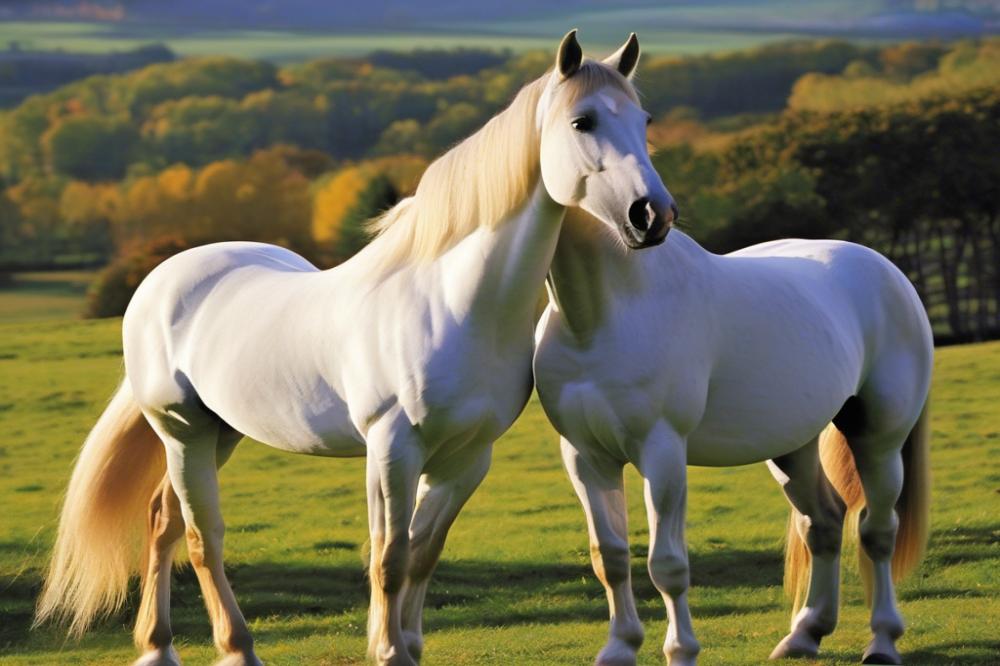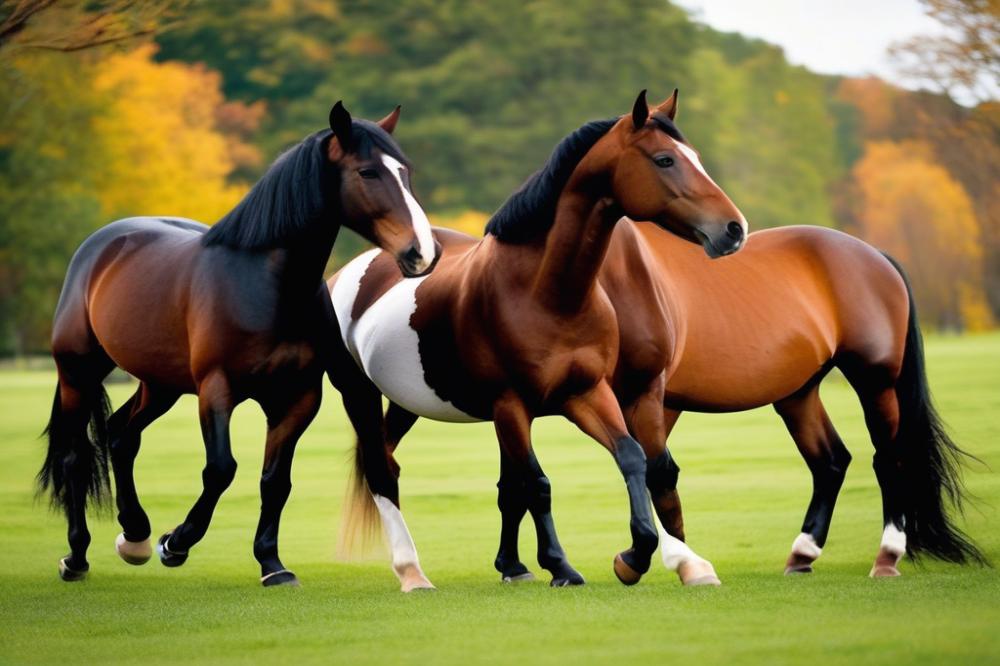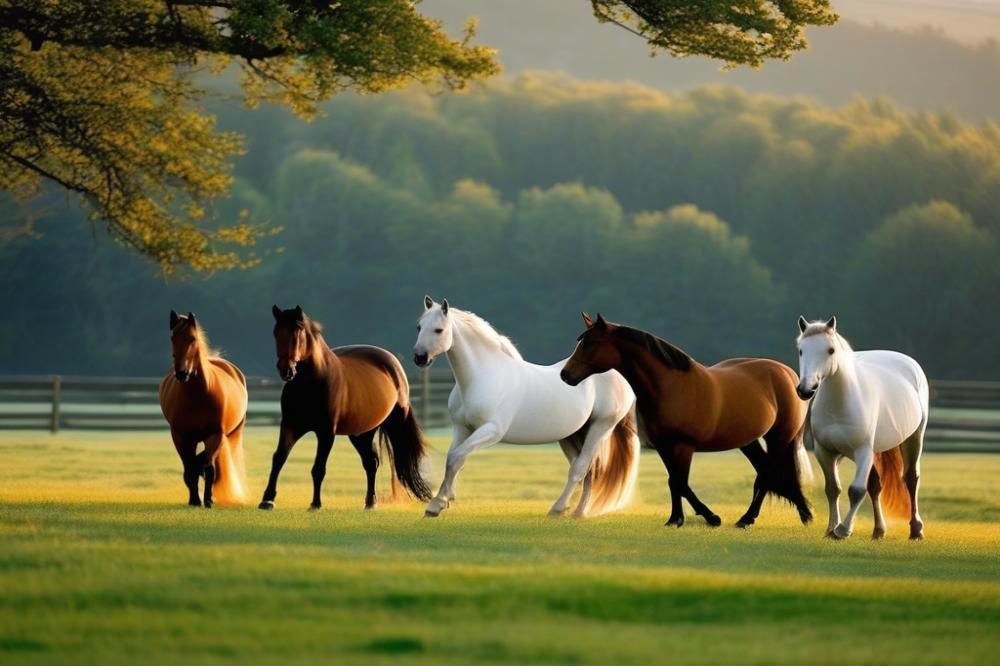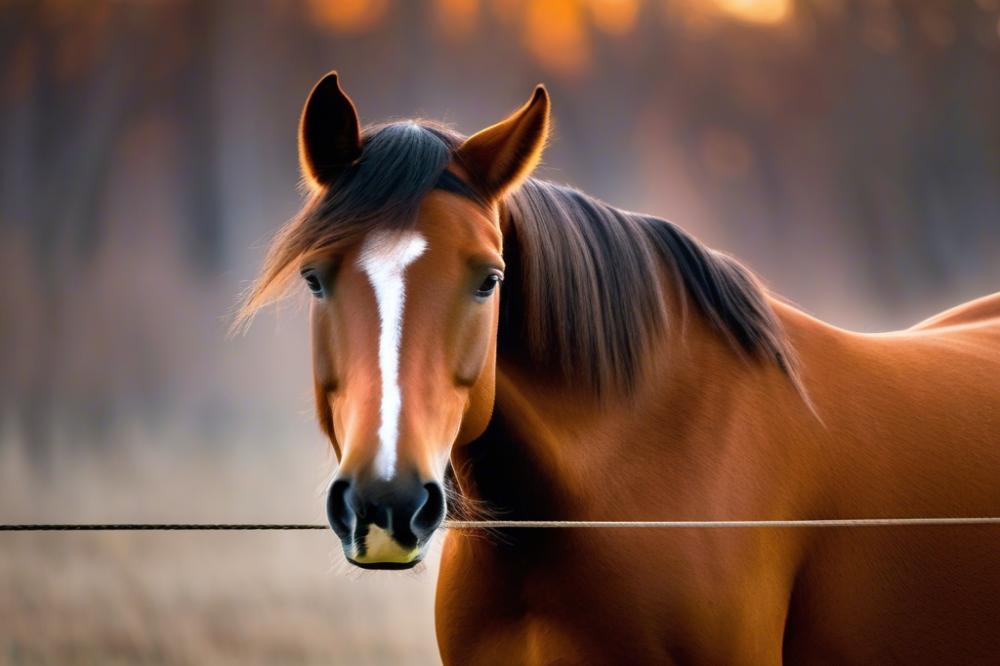Understanding Equine Behavior: The Science of Horse Communication
The world of Equine Behavior is vast and intricate. Horses, those majestic creatures of grace and instinct, rely on a complex system of signals to interact with their environment and each other. Observations reveal that they engage in non-verbal communication, utilizing body language, vocalizations, and even subtle changes in posture. By studying these interactions, researchers shed light on the ways horses express emotions and intentions.
Individuals intrigued by how animals convey their feelings might find Horse Communication particularly fascinating. From flicking an ear to the positioning of their tails, every gesture serves a purpose. Breaches in their body language often reveal deeper sentiments or concerns. Anecdotes abound of riders misinterpreting a horse’s anxious stance, leading to confusion and frustration.
Equally important is recognizing the environment’s role in shaping these behaviors. Factors such as herd dynamics and social structures are pivotal in influencing how horses relate to one another. Communication, whether direct or indirect, stands at the core of their social interactions. By understanding these connections, humans can cultivate more harmonious relationships with these animals, thriving on mutual respect and understanding.
Moreover, the bond between horses and humans illustrates a remarkable interplay of trust and interpretation. While humans rely on verbal cues, horses depend on visual and physical signals. This divergence often creates challenges for both parties. Growing awareness of these nuances fosters empathy and connectedness, enhancing partnerships in work and leisure.
Delving deeper into the scientific aspects of this subject reveals the nuances of how equine behavior unfolds. Each revelation builds on the previous one, evolving our understanding of these creatures. As we explore the foundations of their communication methods, we can appreciate their depth, strength, and temperament.
For those passionate about these animals, diving into the study of equine behavior offers invaluable insights. It allows for a greater appreciation of horses, not just as companions but as sentient beings capable of complex feelings and thoughts. Embracing this knowledge can lead to much richer experiences in the world of horsemanship. Through science, we can unlock the subtle language of these beautiful creatures and forge deeper connections.
Equine Behavior: What Science Tells Us About Horse Communication

Understanding how horses communicate is essential for anyone interacting with these majestic creatures. Each horse possesses a distinctive set of behaviors that can reveal emotions and intentions. From the flick of an ear to the stomp of a hoof, equine behavior is rich with meaning. Such nuances play crucial roles in social interactions within herd dynamics as well as in human-horse relationships.
Definition and Significance of Equine Behavior
Equine behavior encompasses the actions, reactions, and social cues exhibited by horses. This behavior provides insight into their emotional states. A horse’s demeanor can pivot from calm to distressed in mere moments, making interpretation vital. Horses communicate not only through vocalizations but primarily through body language. A raised head can signify curiosity, while pinned ears often indicate aggression or discomfort.
Role of Animal Psychology in Understanding Horses
Animal psychology serves as a backbone in deciphering horse behavior. Researchers examine how horses think and process information, which aids in understanding their communication methods. It’s almost as though horses speak a language of their own. When you observe, you might notice subtle signals that indicate a horse’s mood or readiness to engage.
Natural instincts significantly influence communication patterns. For instance, in wild herds, survival hinges on conveying danger swiftly. This intricate dance of signals fosters bonds among horses, strengthening their social fabric. Appreciating these connections enriches our interactions with them.
Overview of Research in Behavioral Science Related to Horse Communication
The realm of behavioral science has expanded significantly in recent years. Studies delve into the ways horses express emotions through various behaviors. Observations have shown that even slight shifts in posture or gaze can convey complex messages. Researchers often focus on both intraspecies communication and how these animals interact with humans.
Recent findings suggest horses have a remarkable ability to pick up on human emotions. They’ll often mirror the feelings of those around them. This creates an almost symbiotic relationship, where owner and horse share a deeper understanding. Some scientists point out that horses can differentiate between emotional expressions, allowing them to react accordingly.
Furthermore, behavioral studies have explored the social structures of horse herds. Horses form intricate relationships, and understanding these bonds enables better management practices in human settings. Whether it’s recognizing the alpha leader or gauging the dynamics among peers, insights gleaned from research improve welfare practices. This knowledge can lead to more effective training methods, ultimately enhancing the rider-horse bond.
non-verbal cues in Horse Communication

Body language plays a crucial role in how horses interact with one another. Unlike humans, who often rely on words, these animals convey much through posture, movement, and subtle gestures. Understanding these signals can bridge the gap between humans and horses. Furthermore, recognizing these silent messages fosters better relationships and cooperation.
Importance of Body Language in Horse Interactions
Horses are social creatures. They constantly assess each other’s physical states and emotional well-being. A twitch of an ear or a shift in stance can mean the difference between acceptance and avoidance. Awareness of this is vital for anyone working with or around horses. The nuances of horse body language serve as a rich tapestry of information. Observing them offers insights into their comfort levels and intentions.
Common non-verbal cues and Their Meanings
Several common cues reveal a horse’s thoughts and feelings. For instance, a horse with ears pinned back is likely experiencing discomfort or aggression. In contrast, those standing with relaxed ears may indicate curiosity or calmness. Tail movements also convey messages. A horse that swishes its tail might be irritated, while a high, steady tail signifies excitement or happiness.
Other important indicators include the position of the legs and neck. An elevated neck can suggest alertness or a readiness to engage, while lowered legs often indicate relaxation. Similarly, a horse that turns its body away from another is usually expressing a desire for space. These movements act as a visual language, painting a clearer picture of each horse’s emotional landscape.
How Horse Body Language Reflects Emotions and Intentions
Emotion in horses is not solely dependent on vocalizations. Instead, their body posture plays an equally essential role. When a horse is anxious, its body may appear tense. A wide stance and a lowered head often suggest insecurity or fear. In contrast, a confident horse stands tall and appears relaxed. Such variations highlight their emotional state and intentions.
Furthermore, the placement of the horse’s head can indicate its level of comfort. A horse that lowers its head is often signaling submission or peace. Conversely, a horse that holds its head high might be asserting dominance or curiosity about its surroundings. These signals speak volumes about whether they perceive a threat or feel secure in their environment.
In day-to-day interactions, learning these cues can make all the difference. A gentle approach, informed by awareness of body language, cultivates trust. This mutual understanding creates a sturdy foundation for any human-equine relationship. After all, even the most seasoned horse handlers will tell you that horses communicate much more than mere words.
Vocalizations and Their Meaning

Types of Vocalizations Made by Horses
Horses are expressive creatures. They communicate through a rich tapestry of sounds. Neighs ring out like cheerful greetings across the paddock. Whinnies often follow, accompanied by a sense of urgency. The soft nicker? That’s a call for attention or affection. It’s akin to a friendly nudge from a dear friend.
The snort might sound abrupt, but it serves a purpose. This vocalization often indicates a horse’s alertness to a potential threat. Whistles, on the other hand, can signify excitement or show a bond between horse and rider. Each of these sounds has its own texture, its own distinct flavor that adds to the broader conversation horses share.
Analysis of Vocalizations in Different Contexts
Context plays a crucial role in interpreting equine sounds. In a group setting, a mare might nicker softly to reassure her foal. Such communication is both comforting and protective. In contrast, when her herd is threatened, a sharp snort sends a powerful message: danger is near! The urgency in that short burst can galvanize the group into action.
In quieter moments, vocalizations shift entirely. A horse grazing peacefully may make a low, contented sound. This subtle expression signifies ease and satisfaction. During training sessions, horses may vocalize differently, reflecting their mood and engagement. A playful whinny can suggest eagerness to learn. Conversely, a prolonged neigh during an exercise indicates frustration or confusion.
Understanding What Vocalizations Communicate About Equine Emotions
Understanding equine emotions requires listening closely. A horse’s vocalizations can reveal feelings far beyond mere words. When a horse is excited, their sounds often reflect pure joy. However, when they feel isolated, those vocalizations might turn into plaintive calls, echoing the horse’s lonely heart.
Their vocal expressions can be remarkably honest. You often hear a stark difference between a contented nicker and a distressed whinny. Each conveys a wealth of meaning, painting a picture of the horse’s internal state. Imagine a horse at play, engaging in frolicsome antics. Every happy whinny can give you a window into its exuberance.
Emotional intelligence in horses is not just a human trait. They possess their own unique forms of communication. Analyzing these vocalizations offers valuable insights into their emotional landscapes. Tuning into their expressive sounds allows riders and caretakers to foster deeper connections. Trust builds when an equine companion knows that their feelings are being heard and understood.
Social Behavior and Herd Dynamics
The social structure of horse herds
In the wild, horses form complex social systems often referred to as herds. Within these groups, a hierarchy develops, where relationships dictate roles. Dominance and submission play key parts in their interactions. Well-established leaders often emerge, typically consisting of older, more experienced individuals. These leaders guide the herd during movement and grazing. Additionally, bonds between horses shape group cohesion. Close friendships, sometimes described as strong social ties, foster a sense of security among members. Within this structure, grooming behaviors contribute to social bonding. Mutual grooming promotes not only hygiene but also strengthens these important relationships.
How herd dynamics influence individual behavior
Individual behavior within the herd often reflects its dynamics. For example, a horse may behave more confidently with a supportive group. Conversely, isolation or conflict can lead to stress and anxiety. An individual’s position within the social hierarchy can also affect decision-making. Lower-ranked horses might exhibit more cautious behaviors when interacting with dominant peers. This responsiveness showcases an inherent understanding of their environment. Herd dynamics also impact reproductive behaviors, with dominant stallions typically mating more frequently. The ebb and flow of interactions create a constantly shifting landscape of relationships. Each member adapts as necessary, following subtle cues from others.
Social behaviors as a mode of communication among horses
Horses communicate with each other through a rich tapestry of social behaviors. Body language serves as a primary medium; they rely on posture, ear position, and tail movements to express emotions. For instance, pinned ears signal irritation, while relaxed ears often denote comfort. Vocalizations, such as whinnies and nickers, further enrich their communication repertoire. A simple nicker can convey excitement at the sight of a companion, while a whinny may serve to locate a lost friend. Additionally, grooming rituals reinforce bonds and indicate trust. Observing these interactions reveals an intricate language that distinguishes each horse’s personality. Humorously, one might say that horses have mastered the art of “talking without words.” Their social behaviors create a dialogue that encapsulates emotions, intentions, and desires, fostering a harmonious herd environment.
Human-Horse Interaction
Understanding communication from a human perspective
Engaging with horses requires more than simply taking the reins. People often overlook the subtleties of equine gestures, missing the entire story a horse conveys through its body language. A flick of the ear, a shift in weight, or a soft nicker can say far more than words ever could. Recognizing these signals can bridge the gap between species. For instance, when a horse approaches you with its head lowered and relaxed posture, it often signifies a willingness to engage. Conversely, pinned ears and a swishing tail should be taken as warnings, akin to a stop sign flashing in your face. Understanding these nuances fosters a deeper connection, one where horse and human speak the same language, albeit with different dialects.
Impact of equine behavior knowledge on training techniques
Knowledge gained from observing horse actions can transform training practices entirely. Trainers equipped with insights into behavioral cues can tailor their methods to align more closely with equine instincts. This might mean incorporating play into sessions to maintain engagement, or utilizing calming techniques when a horse appears anxious. Horses thrive in environments where their natural tendencies are acknowledged. Adapting training to respect these instincts does wonders for learning and retention. It’s not merely about asking for compliance; it’s about fostering collaboration. Picture this: instead of forcing a horse to comply through sheer muscle, why not engage its intellect and emotions? It’s like dancing with a partner, where both lead and follow in harmony.
Building better relationships with horses through understanding communication
Forming a bond with a horse requires patience and attentiveness. Equine communication isn’t a one-way street but a dance that involves give-and-take. When humans take the time to listen through observation, they often discover that what seemed like stubbornness is simply confusion or fear. Horses, much like humans, are products of their experiences. Reflecting on a horse’s past can color its present reactions. Building trust isn’t a quick fix; it evolves over time, brick by brick. A horse that feels understood is less likely to bolt at the first sign of unease. Crafting these relationships echoes the sentiment of a good friendship—communication is key. With understanding, humans can create an environment of safety, one that encourages a horse to voice its needs.
Application of Equine Behavior Science
Practical Implications for Trainers and Horse Owners
Understanding horse communication can lead to improved outcomes in training and care. Recognizing stress signals allows trainers to address issues before they escalate. A horse that pins its ears back is not just being moody; it’s expressing discomfort or irritation. Trainers familiar with these behaviors can adapt their methods accordingly. Shifting the approach can build trust, turning training sessions into more productive and less stressful experiences for both the horse and the human.
Horse owners, too, can benefit immensely from a solid grasp of behavioral cues. Feeding routines, for instance, can be adjusted based on a horse’s body language. If a horse hesitates at feed time, it might indicate anxiety or an uncomfortable environment. Observing behaviors closely helps owners respond to their equines’ emotional states effectively. The payoff isn’t just better behavior; it’s a happier horse overall.
Using Behavioral Science to Improve Training and Care
Implementing principles from behavioral science requires attentiveness and patience. Positive reinforcement techniques have garnered much attention for good reason. By using treats or praise when a horse performs a desired action, results often improve dramatically. In fact, this can turn a mundane training session into a fun game. Horses can thrive in a supportive atmosphere. Ultimately, this leads to better communication between horse and trainer.
Equally, the environment has its share of influence on a horse’s behavior. A stressful space can morph a docile creature into a jittery bundle of nerves. Calm surroundings paired with consistent routines create a backdrop for effective communication and training. Each horse is an individual, and acknowledging that allows owners to tailor their approaches uniquely.
Future Directions in Studying Horse Communication
Research on horse communication is still evolving. Scientists are starting to explore the depths of equine emotional intelligence and its implications for training. New technologies could allow researchers to analyze subtle behavioral changes. Imagine monitoring a horse’s heart rates during various training scenarios, ultimately leading to insights about its emotional responses.
There is also potential for exploring interspecies communication—how horses respond to human cues in different contexts. In an era where technology meets animal science, the possibilities seem endless. Future studies might uncover relationships between horse behavior and welfare, further enriching our understanding of these magnificent creatures.
With ongoing investigations, trainers and owners are bound to gain fresh perspectives on effective care and training strategies. One can only hope that these revelations will usher in an era of even deeper bonds between horses and humans, promoting mutual understanding and respect.
Synthesizing Insights
Understanding the intricate tapestry of horse interactions enriches our appreciation for these remarkable beings. Engaging with a horse often requires interpreting a range of signals, from subtle shifts in body position to pronounced motions and sounds. A horse’s ability to convey emotions and intentions stands as a testament to their complex social structures and instinctual behaviors. Grasping these nuances can transform the human-horse relationship from a mere transactional dynamic into a profound partnership.
Observing the delicate interplay of ears, eyes, and tail can reveal how horses navigate their environments and communicate with one another. These are not just random movements; instead, they serve as the horse’s language, drawing from an extensive vocabulary of non-verbal cues. With time and patience, individuals can learn to discern the corresponding meanings of specific actions. This can lead to a deeper connection and understanding of these intelligent animals.
Incorporating this knowledge into daily interactions can yield remarkable results. When riders or caretakers pay attention to vocalizations, one can identify moments of distress, contentment, or curiosity. The ebb and flow of communication fosters a bond rooted in empathy and trust. Such insights can guide decisions on training methods, health care, and even interactions in daily routines.
Research underscores the necessity of recognizing these communicative modalities, promoting a broader understanding of what it means to share space with a horse. This knowledge can illuminate the paths we take in ensuring these animals thrive socially, physically, and psychologically. Enriching their lives ultimately reflects on ours, highlighting the reciprocal nature of this relationship.
Taking the first step towards harnessing this understanding opens up new avenues for growth. To fully embrace the wisdom horses can offer, consider diving deeper into their world. Engaging with resources that explore their behaviors can be enlightening. Whether through anecdotes, studies, or shared experiences, every insight contributes to a more holistic comprehension.
If you’re ready to take the next leap in your equine journey, explore more about these transformative interactions. For detailed insights, visit non-verbal cues or delve into the fascinating world of vocalizations. Sign up today for resources designed to expand your understanding: Join us now!



